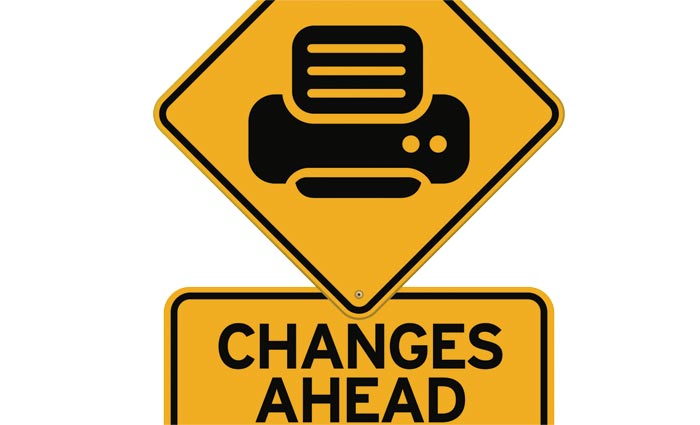

Greetings from Australia. I have just circumnavigated the continent, stopping in Sydney, Brisbane, Darwin, Perth, Adelaide and Melbourne. I have seen Point Hicks through the mist, which was the first land seen by Captain Cook. I lectured in four cities and met printers all over. As my kids would say – it was awesome.
What did I learn from my trip Down Under? The forces affecting printers throughout the world are pretty much the same: lower print volume has led to a reduction in printing services, which has led to a reduction in paper and equipment and more. The reduction in volumes have resulted from a shift of paper-based communication to electronic communication. There has also been a transfer of volumes to Asia, where lower labour rates absorb manufacturing from developed nations. Much of what is left over is shorter-run. Litho volumes are declining as digital grows.
Growth will not come from traditional areas – it will come from new volumes. Those Aussie printers who were offering variable-data printing told me about it in a whisper. Printers who have figured out VDP tend not to be outspoken.
A printer in Perth had established a good base in photobooks. With the proliferation in digital cameras and mobile phone cameras, people are discovering that the only way to preserve their memories is to print them.
There was the mailing service in Melbourne that was providing innovative VDP and target marketing. Their company name still said “mailing service” but this no longer described what they did. Australian printers are undergoing an identity crisis. In the US, the term “marketing services provider” is common and some Aussie printers were using it.
A printer in Brisbane had developed excellent database capabilities but they billed this service along with the printing on the invoice, mixing a value-added service with a commoditised service. Today, print is actually the ancillary service. We must separate it from services that we can ‘up-charge’.
One sheetfed offset printer in Sydney was no longer seeing 50,000 runs but hadn’t implemented digital.
Many Australian printers have applied wide-format inkjet. That market is doing well, and some are expanding into flatbed inkjet, which allow them to enter the forbidden territory of industrial printing. Why forbidden? Because printers are always wary of new markets. Some are still wary of digital printing.
A Melbourne finishing service had entered digital printing. Their revenue came more from the great binding and finishing of the print. Their business card looks like the art of origami.
Another Melbourne printer offers cross-media services. Only a few printers have embraced this new electronic world and they are in the vanguard.
One quickprinter said digital printing had helped but the same machine can be installed at customer sites and may remove volume from the commercial sector. To compete, printers must automate and cut labour relentlessly.
If there was any common denominator among printers in Australia and overseas it is that each business is re-inventing itself. The Aussie printers I met appeared to be more flexible, more automated and more open to new ideas. I was surprised how many are making the long flight to Drupa to get a head start on new technology. Our industry has probably seen more changes in the past decade than in the past 80 years and this will only accelerate.
It was wonderful to meet many of you and compare notes on the industry we love. When you meet an Australian, you make an immediate friend.
Frank Romano is professor emeritus at the Rochester Institute of Technology
Comment below to have your say on this story.
If you have a news story or tip-off, get in touch at editorial@sprinter.com.au.
Sign up to the Sprinter newsletter
